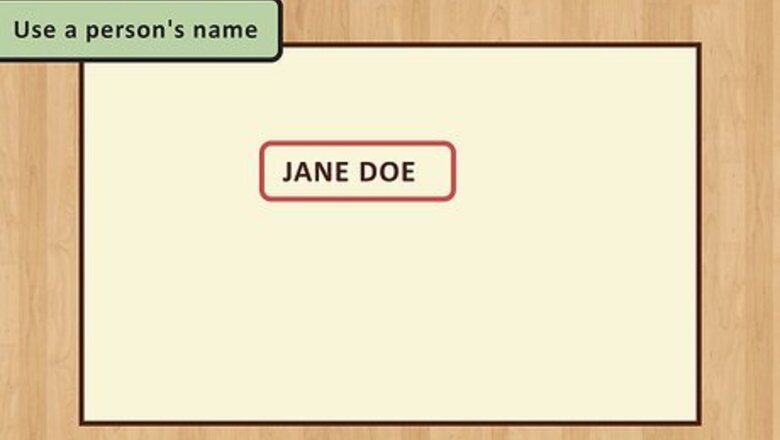
views
Writing a Business Address in USPS Code

Use a person's name. No matter where the letter is going, it's best to address it to a person, if possible. Figure out who would be the most appropriate person for the letter to find. If you can't find a person's name, consider using a department, such as the HR department. Do your research to find out who you should send it to. For example, if you are sending in a resume, look around online to figure out the appropriate person. If you can't find a person, it's acceptable to call the company and ask who the letter should be addressed to.
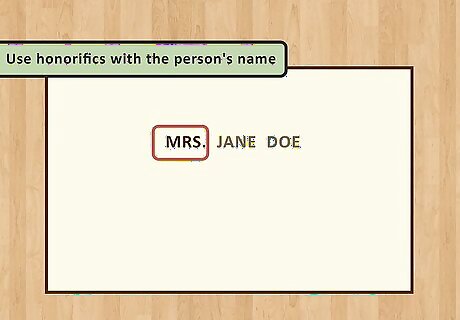
Use honorifics with the person's name. Honorifics are things like "Mr." and "Mrs." that go before a person's name. However, always pick a professional designation or title over MR, MS, MISS, or MRS. For example, if you're writing someone with a doctorate, you'd use "DR" before their name.
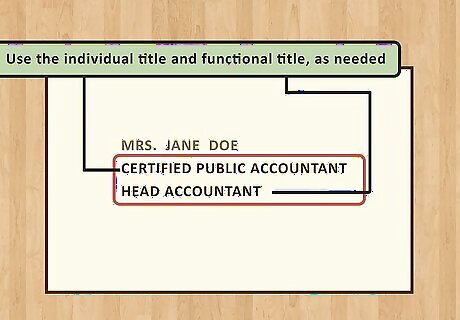
Use the individual title and functional title, as needed. On the next line, place the individual or professional title of the person, such as "CERTIFIED PUBLIC ACCOUNTANT." On the next line, use the person's title within the company, such as "HEAD ACCOUNTANT." If you can only find one, use that one.
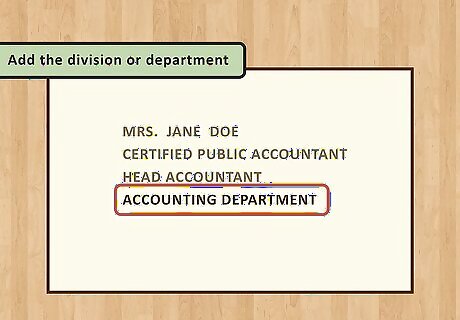
Add the division or department. If the letter needs to go to a specific department once it reaches the business, you need to include that department in your address. It should have its own line underneath the person's titles, such as "ACCOUNTING DEPARTMENT."
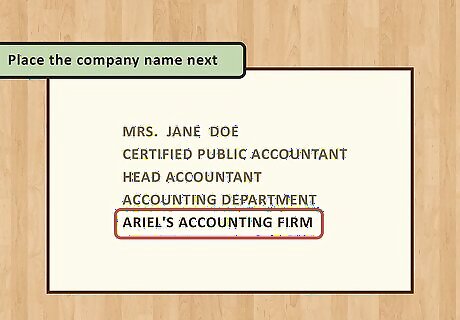
Place the company name next. The name of the company or main recipient goes next, if applicable. Like the other elements, it receives its own line, below the division or department the letter is being mailed to. Make sure to get the name of the company completely correct, such as "ARIEL'S ACCOUNTING FIRM."
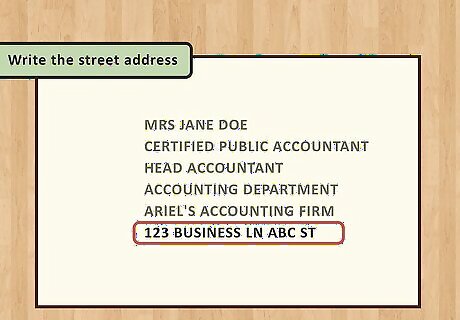
Write the street address. Now, you're down to the street address, the place the business is actually located. The street number goes first, followed by a directional abbreviation (if applicable), such as "NW" or "S." Next, place the street name, as well as any suffixes to the street name, such as "ST." You may also need to at a suite number, such as STE 118.
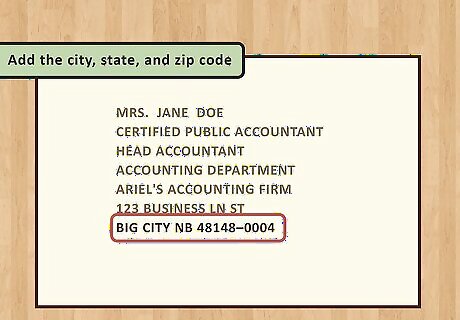
Add the city, state, and zip code. Next, write the city and state. You don't need a comma between the two, and make sure to use the state code abbreviation. After that, use the 5-digit zip code, as well as the 4-digit extension with a hyphen in between. If you don't know the 4-digit extension, you can look it up using the other information you have on the USPS website.
Using USPS Mailing Standards
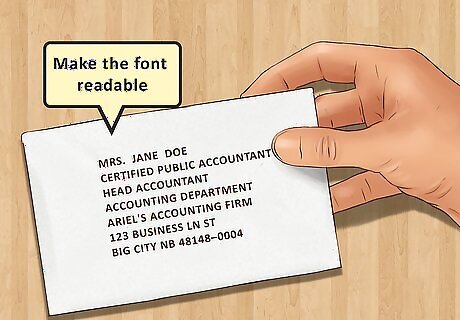
Make the font big enough. The font should be large enough so that's easy for a post office employee to read it. The standard is the font should be readable when held at arm's length. If your font is too small to read at this distance, switch to a bigger one. USPS recommends at least an 8-point, legible font.
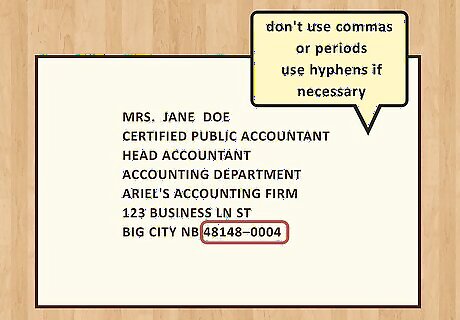
Skip punctuation. The USPS prefers that you don't use punctuation when writing out the address. That is, don't use commas or periods, even to divide the state from the city. Also, don't use periods after abbreviations such as "ST" or "NW." However, you can use hyphens if the street number calls for it. You can also use a hyphen between the 5-digit zip code and the 4-digit extension.
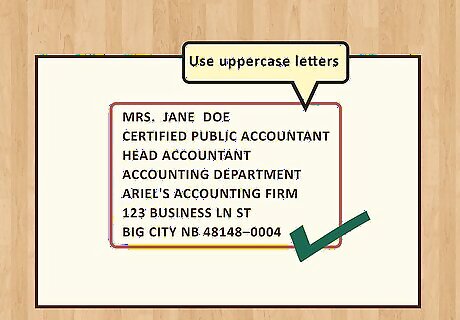
Use uppercase letters. The USPS doesn't require that addresses use all uppercase letters. However, it is the preferred method for writing an address. Therefore, make sure to capitalize the whole address, not just the beginning of each word.
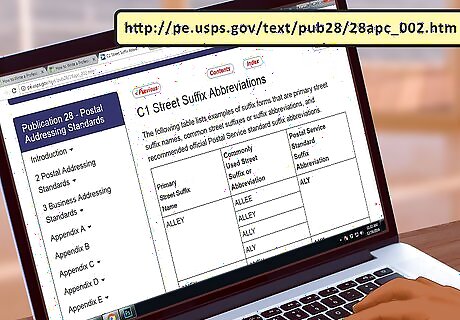
Find the standard abbreviations. The USPS has standard abbreviations for things like directional words, street suffixes, and states. Find the correct abbreviations for the words you're using on the USPS website, to make sure your letter gets to where you need it to go.
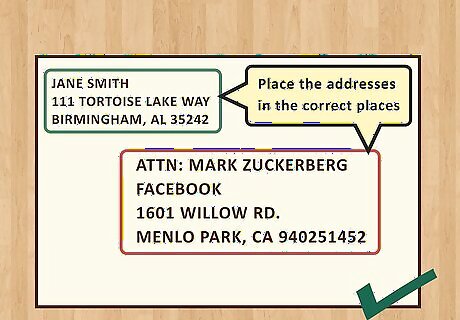
Place the addresses in the correct places. Remember, you also need to include your return address. Both addresses should be on the same side. Your address should be in the upper left-hand corner, while the main address should be over towards the right, but more centered vertically.
Making the Document Professional
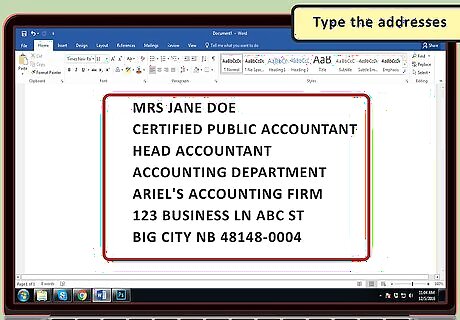
Type the addresses. The best option is type the addresses. You can either use labels that you print on or print directly on the envelope. You can also just print on a plain piece of paper, cut the label out, and glue it on, though that can end up being messier. Your word processing software should have templates for printing on both labels and envelopes. Pick the template that matches the labels you bought, then type out the address for both the sending address and return address. Alternatively, pick the template that matches your envelope, then type in the addresses and print it.
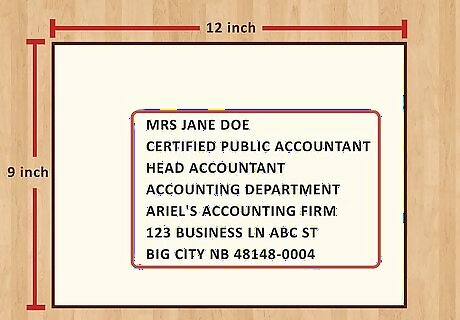
Consider using a full-sized envelope. When mailing a letter such as a resume, think about using a 12 by 9 envelope. That way, you don't have to fold your letter to fit in the envelope. When the recipient gets it, it will look more professional. Keep in mind, though, that larger envelopes cost more to mail. Keeping it uncreased also allows the employer to make copies more easily.
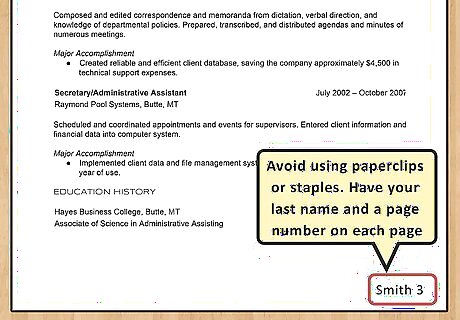
Avoid using paperclips or staples. Paperclips and staples can make the resume look less professional. A better option is to use neither, and just make sure you have your last name and a page number on each page, so if one gets mixed up with other papers, it can be placed back in order.
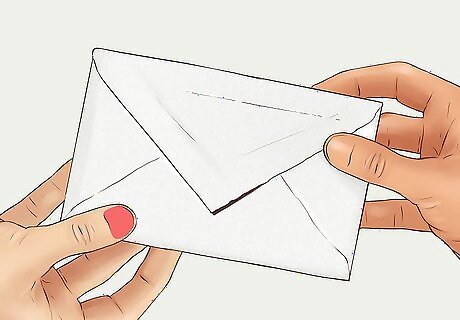
Skip mailing services for resumes. Some people use mailing services to send out large numbers of their resumes to potential employers. However, many of these companies use the same fonts and styles for all their resumes, and employers will reject them without even looking at them. Stick to doing it yourself.




















Comments
0 comment